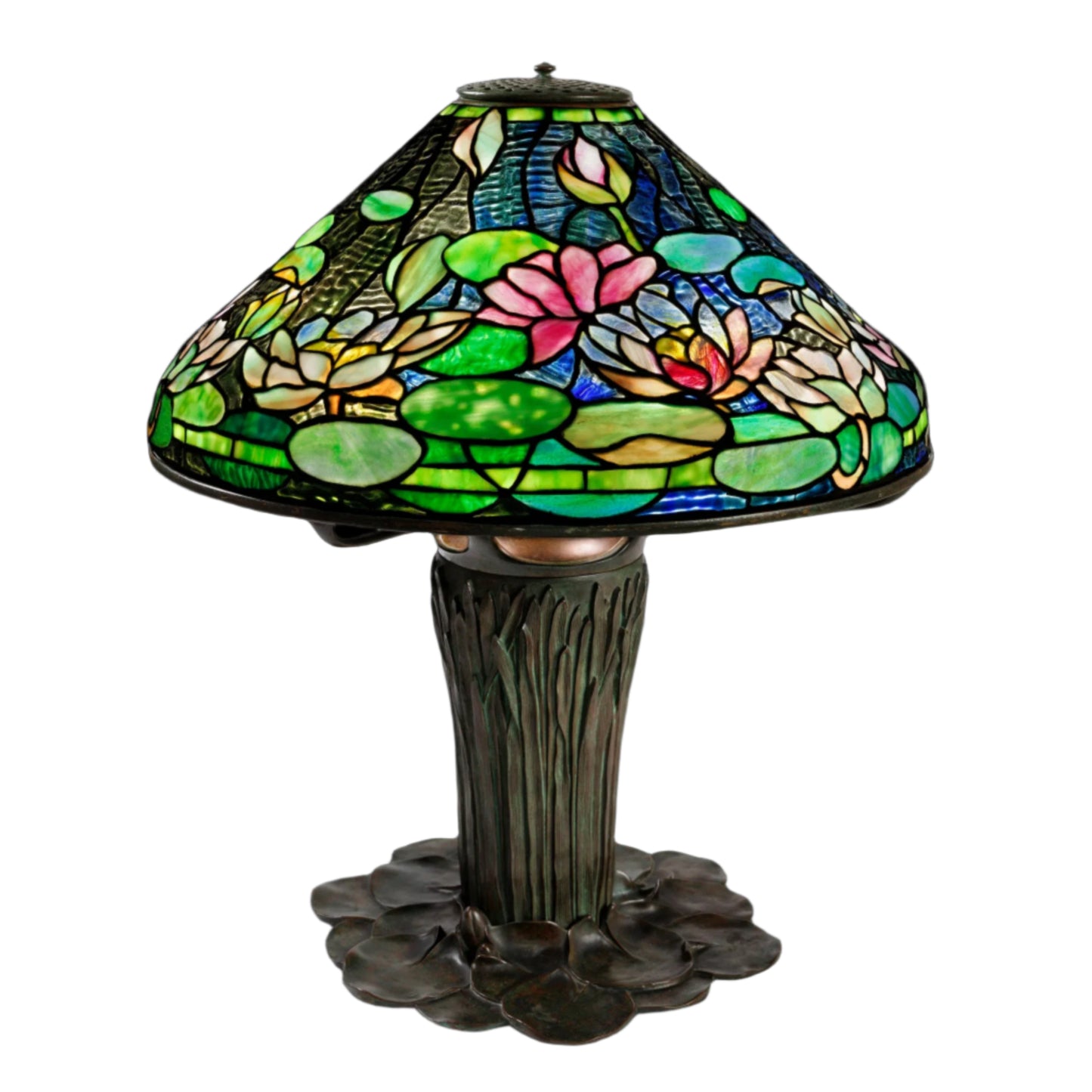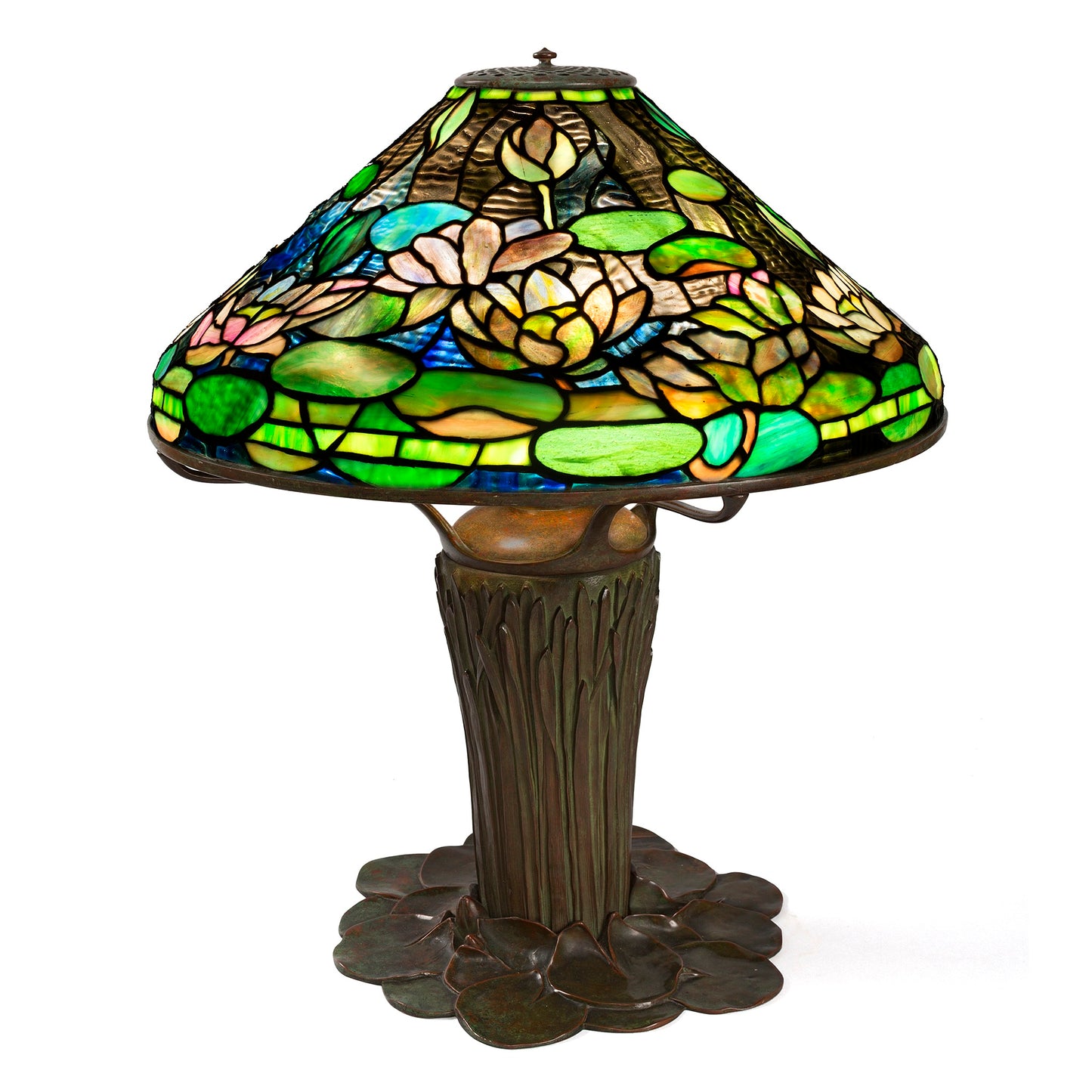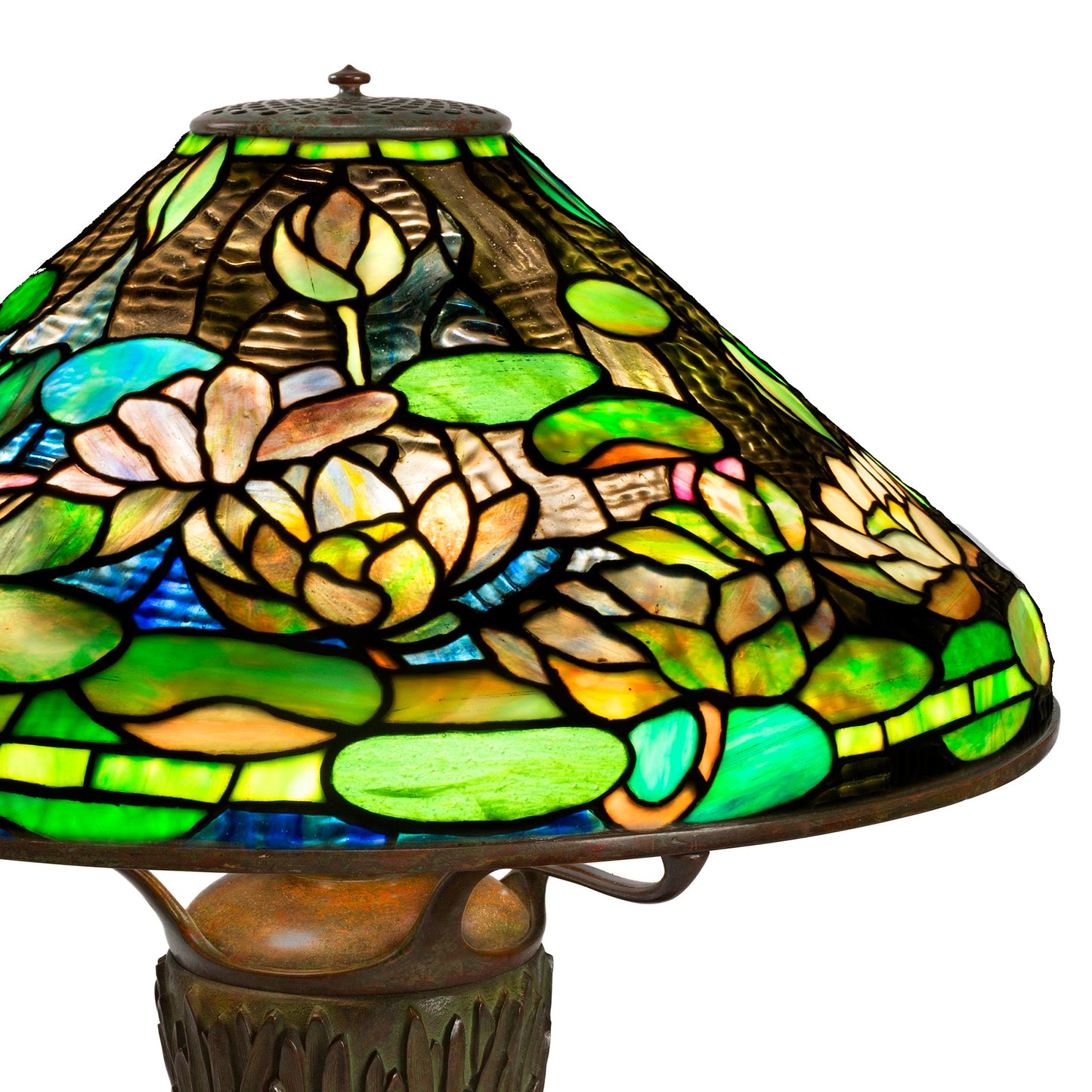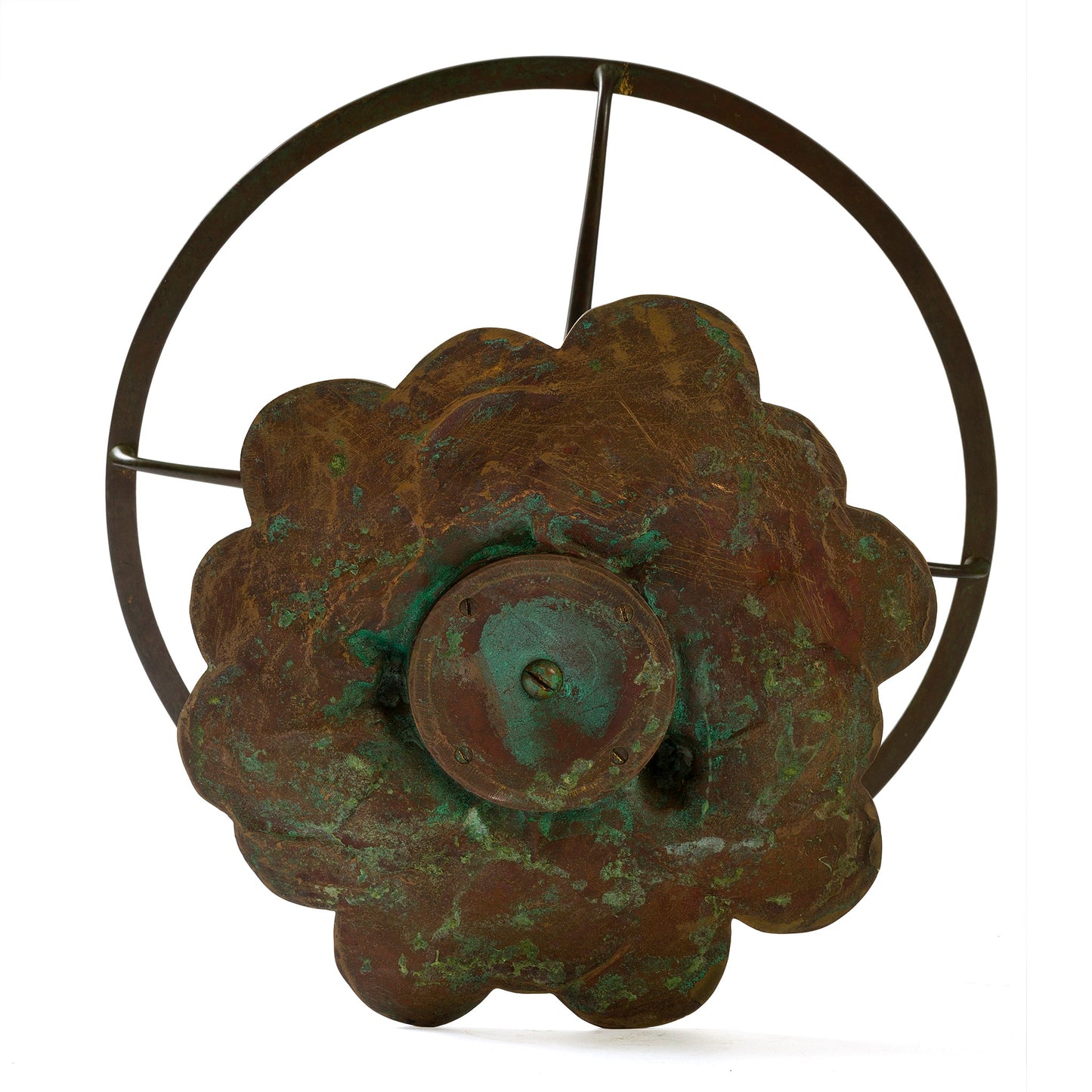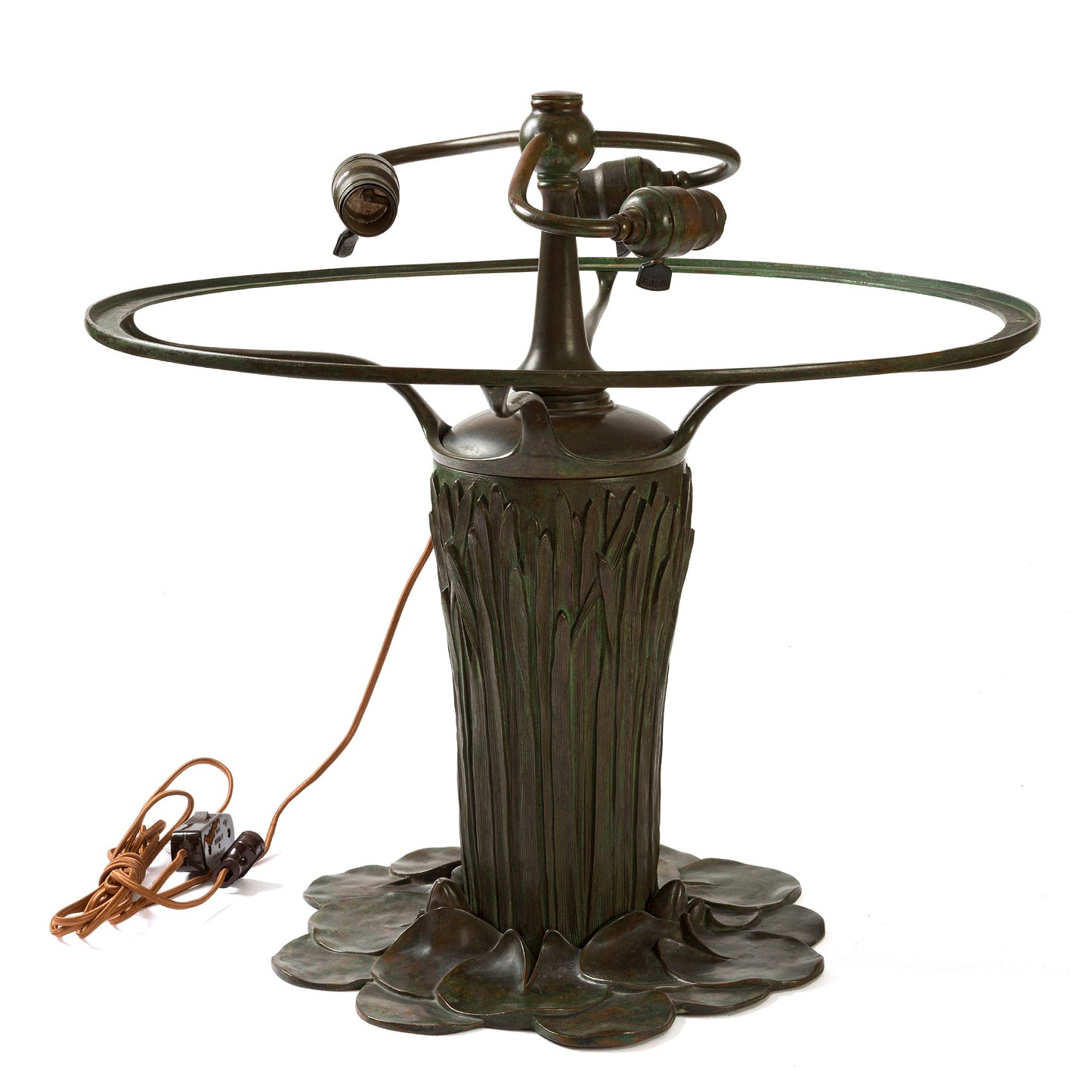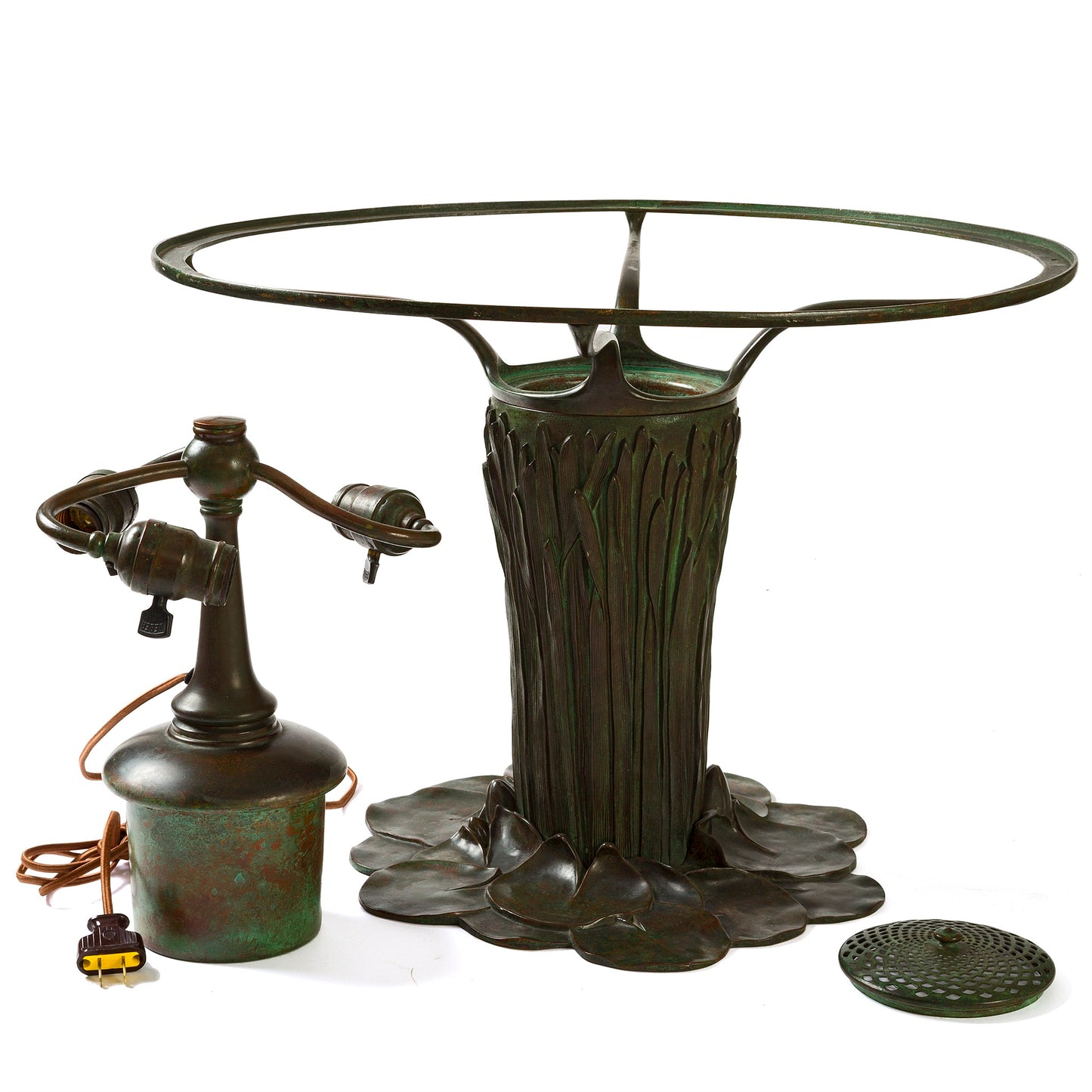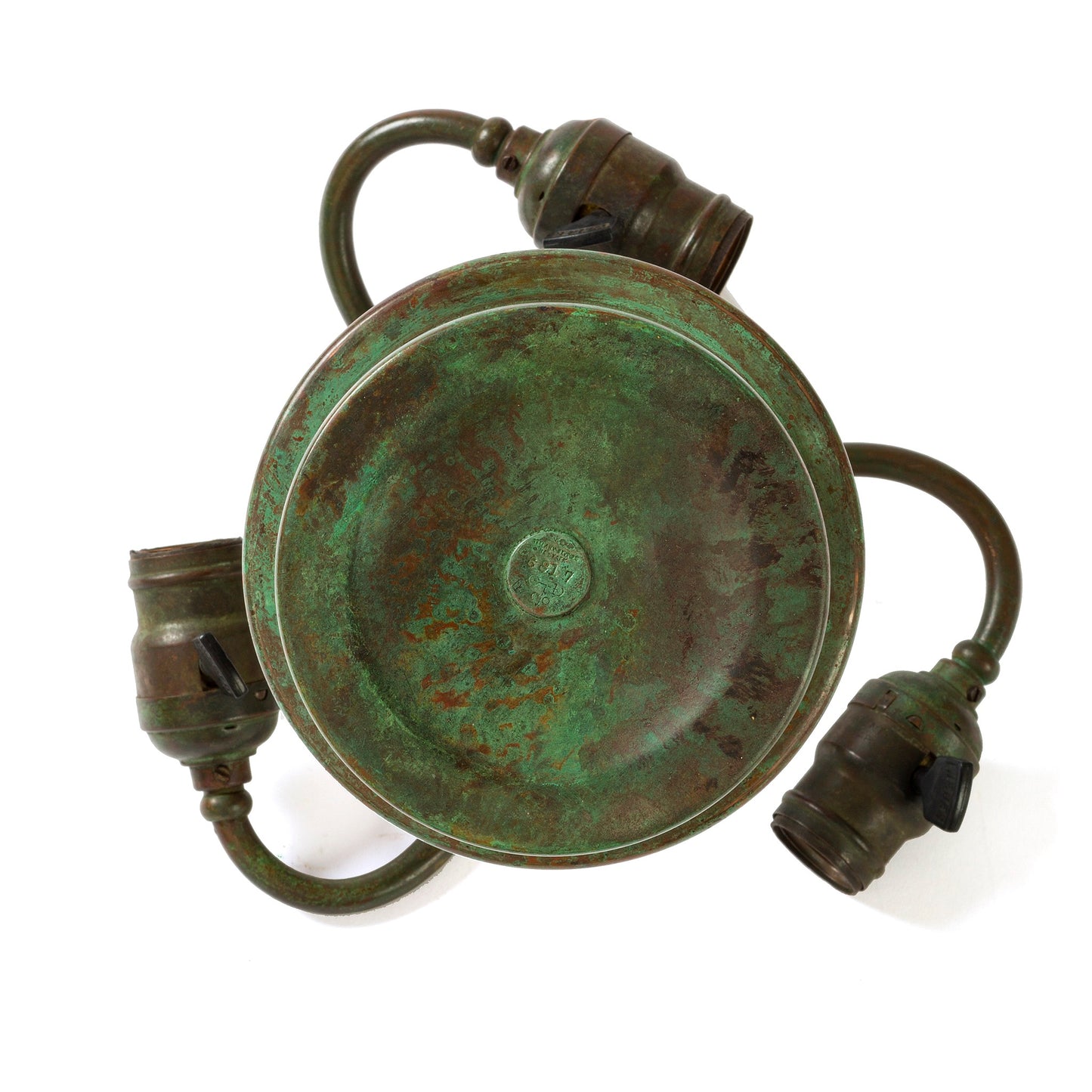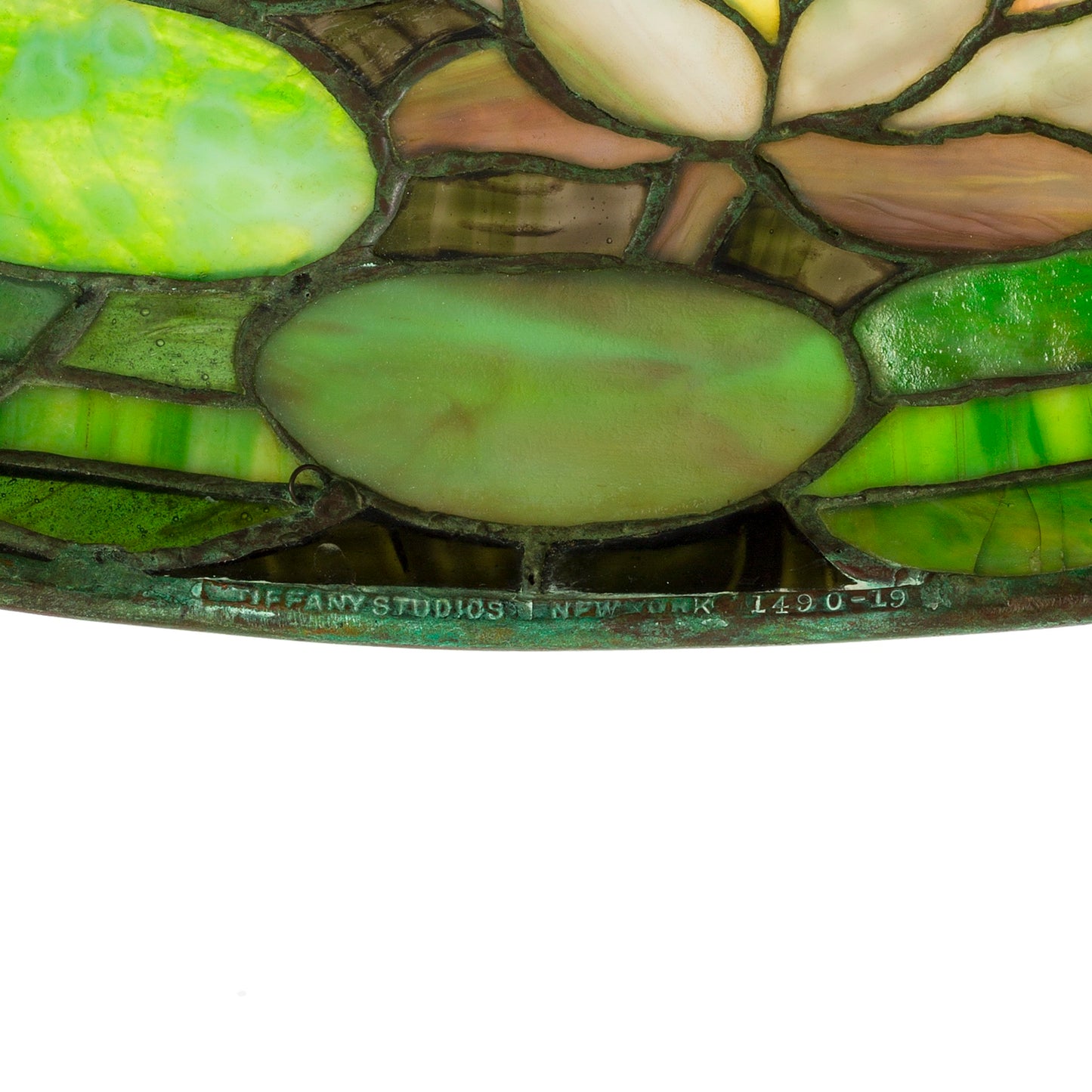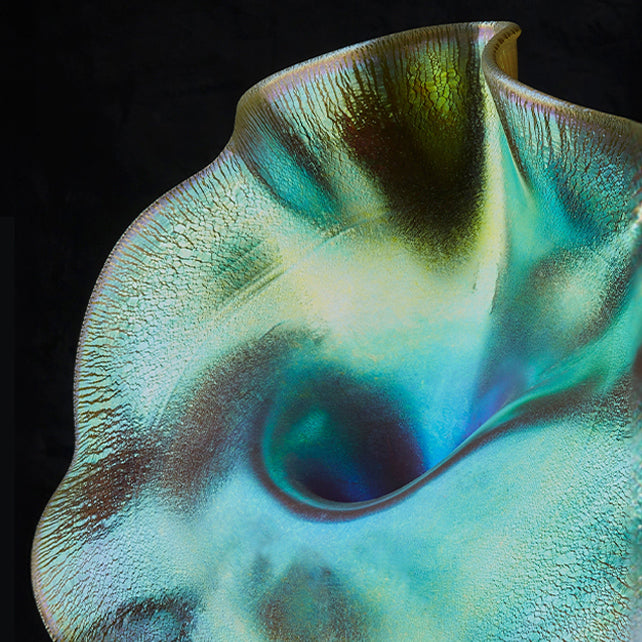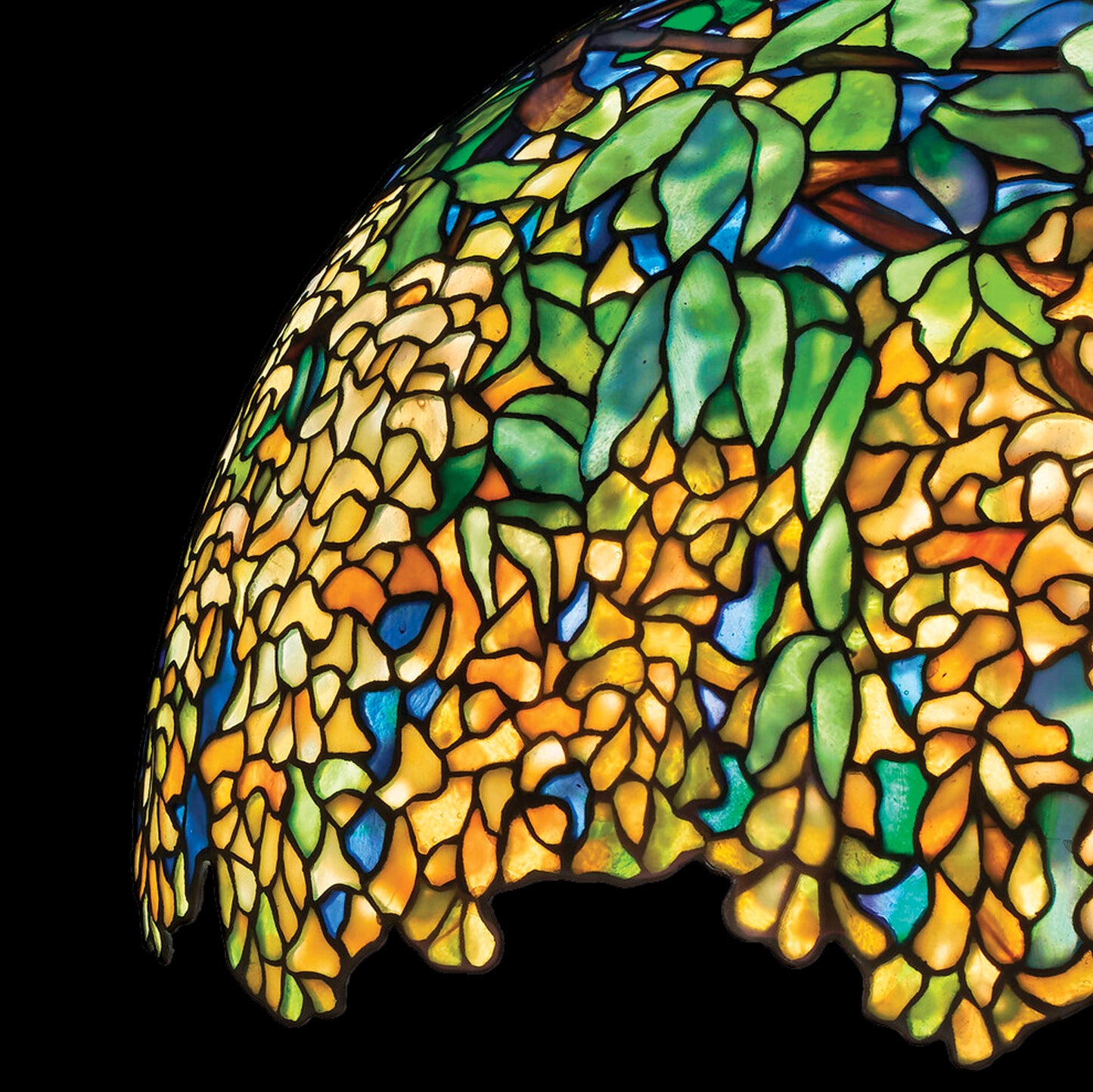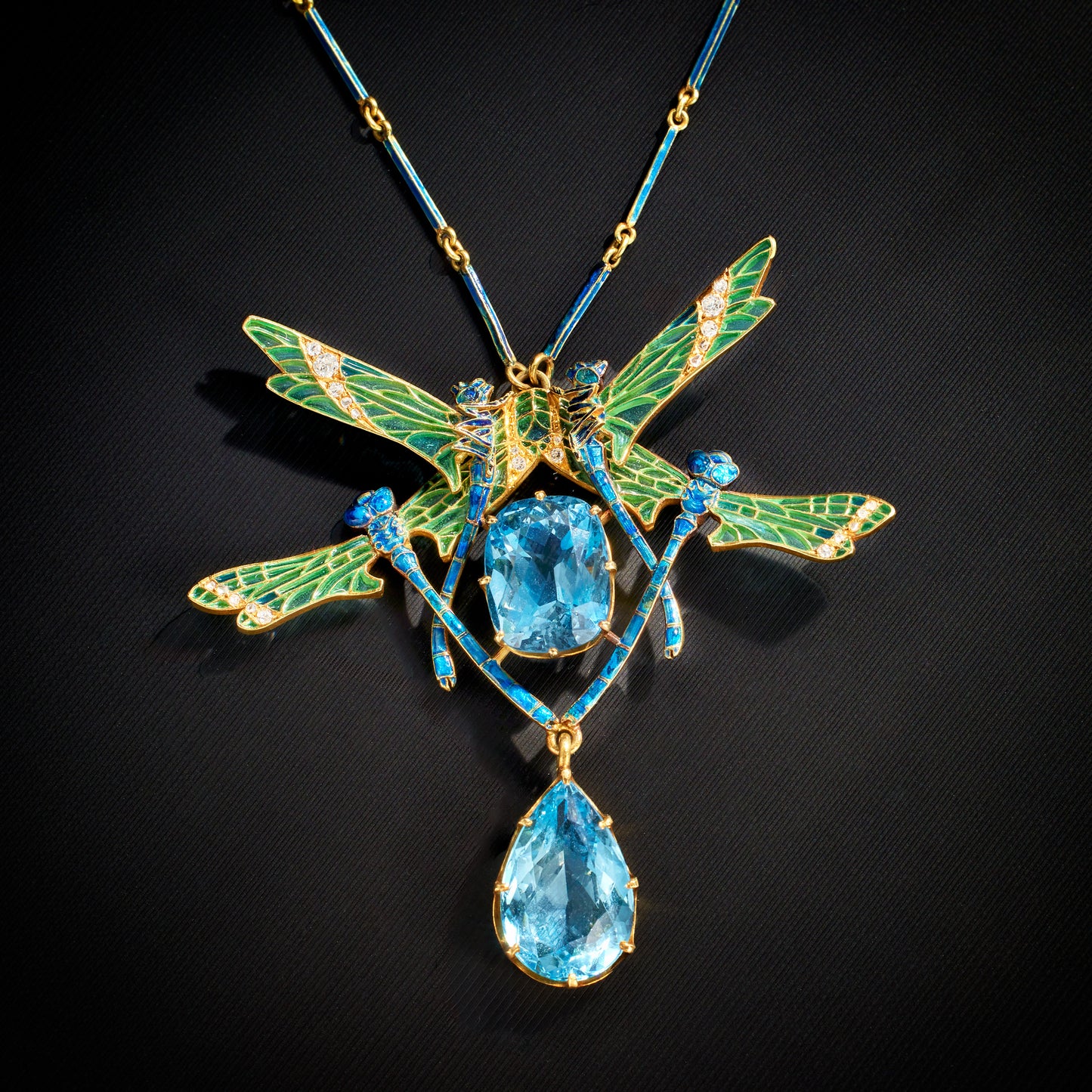Tiffany Studios New York “Flowering Water Lily” Table Lamp
Item #: L-18531
Artist: Tiffany Studios New York
Country: United States
Circa: 1905
Dimensions: 26" height, 20" diameter
Materials: Favrile glass, Bronze
Shade Signed: Tiffany Studios New York 1490-19
Base Signed: Tiffany Studios New York 6817 with the Tiffany Glass & Decorating Company monogram. Impressed on oil canister
Literature: Lamp base pictured in Tiffany Lamps and Metalware: An illustrated reference to over 2000 models, by Alastair Duncan, Woodbridge, Suffolk: Antiques Collectors’ Club Ltd., p. 98, cat . 392, base # 453; Lamp shade also on p. 150, cat. 627, shade # 1490; Lamp shade also pictured in The Lamps of Tiffany, by Dr. Egon Neustadt, New York: The Fairfield Press, 1970, p. 181, plate 146
Item #: L-18531
Artist: Tiffany Studios New York
Country: United States
Circa: 1905
Dimensions: 26" height, 20" diameter
Materials: Favrile glass, Bronze
Shade Signed: Tiffany Studios New York 1490-19
Base Signed: Tiffany Studios New York 6817 with the Tiffany Glass & Decorating Company monogram. Impressed on oil canister
Literature: Lamp base pictured in Tiffany Lamps and Metalware: An illustrated reference to over 2000 models, by Alastair Duncan, Woodbridge, Suffolk: Antiques Collectors’ Club Ltd., p. 98, cat . 392, base # 453; Lamp shade also on p. 150, cat. 627, shade # 1490; Lamp shade also pictured in The Lamps of Tiffany, by Dr. Egon Neustadt, New York: The Fairfield Press, 1970, p. 181, plate 146












